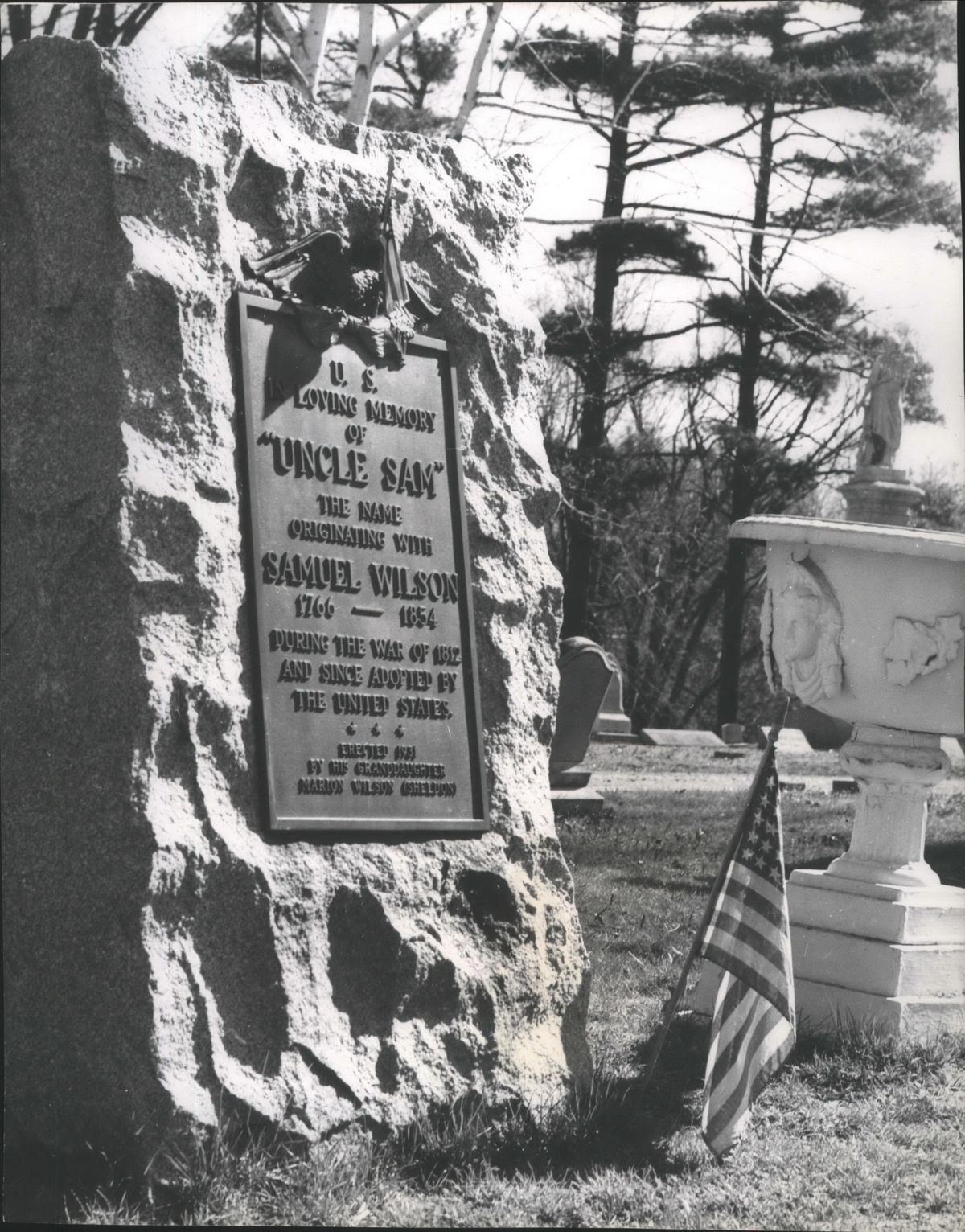This column reflects the opinion of the writer. Learn about the differences between a news story and an opinion column.
Front Porch: Happy National Uncle Sam Day

Today – Sept. 13 – is National Uncle Sam Day, and I feel the need to recognize it and feel good about it.
Let’s put aside our political animosity, weaponizing of national symbols and declaring as patriots only those who share our own personal beliefs – and just take a moment to hold hands as Americans and give a tip of the stovepipe hat to the most widely recognized personification of the United States of America, Uncle Sam.
I’m pretty sure he’s a bipartisan kind of guy.
The history of Uncle Sam as a concept or kind of shorthand representation of America is pretty interesting, as is that of Samuel Wilson, the man whom the U.S. Congress in 1961 recognized as “the progenitor of America’s national symbol of Uncle Sam.” In 1989 President George H.W. Bush proclaimed National Uncle Sam Day to be Sept. 13 in recognition of Samuel Wilson, who was born Sept. 13, 1766, before the United States of America even existed as a nation.
Yes, there is a real person behind the symbol. I never knew that. Because Samuel Wilson lived more than 200 years ago, there is a bit of legend and supposition involved in his man-as-symbol creation story, but most of the historical record and writing on the subject gives a consistent telling of how he became Uncle Sam.
The descendent of one of the oldest families of Boston, Sam Wilson was born in Arlington, Massachusetts, and grew up in Mason, New Hampshire, where at age 14 he joined the Revolutionary Army and guarded livestock and helped with slaughtering and packaging meat for the soldiers. As a young man he moved to Troy, New York, where he and his brother, Ebenezer, purchased land close to the Hudson River and made bricks. They opened E&S Wilson in 1793 and also operated a slaughterhouse, being able to transport products from their enterprises from their own dock along the river.
It was during the War of 1812 that he rose to prominence. Secretary of War William Eustis contracted with Elbert Anderson of New York City to provide rations for U.S. forces in New York and New Jersey for one year, and the Wilson brothers subcontracted to supply 2,000 barrels of pork and 3,000 barrels of beef. The barrels were marked E.A.-U.S. (for Elbert Anderson, United States).
Much of the meat was shipped to a camp of 6,000 in nearby Greenbush, New York. Many of the soldiers there were native to Troy, where Wilson had the nickname of Uncle Sam. Apparently, when they saw “U.S.” on the barrels, and knowing about Wilson, his meat packing business and his nickname, they figured that U.S. had to stand for their Uncle Sam. Over time, anything in the Army having the “U.S.” mark on it became associated with the name Uncle Sam. The name spread from the military to civilian understanding as well.
Muddling up the picture a little, is that the term Uncle Sam predated Sam Wilson and was in evidence as early as 1775, as in the original lyrics of the tune “Yankee Doodle” during the Revolutionary War. It seems unclear whether that was a reference to Uncle Sam as a metaphor for the United States or an actual person named Sam.
And, of course, there have been earlier and other personifications of the young country, including the image of Columbia, portrayed as a woman, beginning in 1738 (before the American Revolution) in which she is garbed in red, white and blue. Some still consider Uncle Sam the symbol of the government and Columbia the representation of the nation as a whole.
The physical image of Uncle Sam has evolved over the years. Early on, he was drawn to resemble Brother Jonathan (for Gov. Jonathan Trumball of Connecticut during the American Revolution), considered the personified emblem of New England, and even Abraham Lincoln. It is said that the first illustration of Uncle Sam was published in Harper’s Weekly in 1861, showing him festooned with a starred bandana and a striped vest. The most enduring, however, was created and refined in the 1860s and 1870s by political cartoonist Thomas Nast, who gave the character his white beard, stars-and-stripes suit and stovepipe hat. (Nast also created the modern image of Santa Claus as well as the donkey and elephant symbols for the Democratic and Republican parties.)
The Nast imagine burst into the nation’s consciousness when it was used in 1917 as a military recruiting poster late in World War I, with a firm-faced Uncle Sam pointing out of the poster above the words “I Want You.” It is reported that 4 million of those posters were printed between 1917 and 1918.
Images of Uncle Sam are used for just about everything now – in advertising to sell insurance and coffee and for Halloween costumes. He has been used pejoratively and as a symbol of hope and comfort, military might and … whatever we choose to see in him, and in ourselves.
Sure, we can take exception to the militarization of the symbol or turning it into a huckster for name-your-product, but let’s not do that today. Let’s just be amiable patriots for a day, National Uncle Sam Day.
We can go back to our regular rancor tomorrow.
Voices correspondent Stefanie Pettit can be reached by e-mail at upwindsailor@comcast.net.
